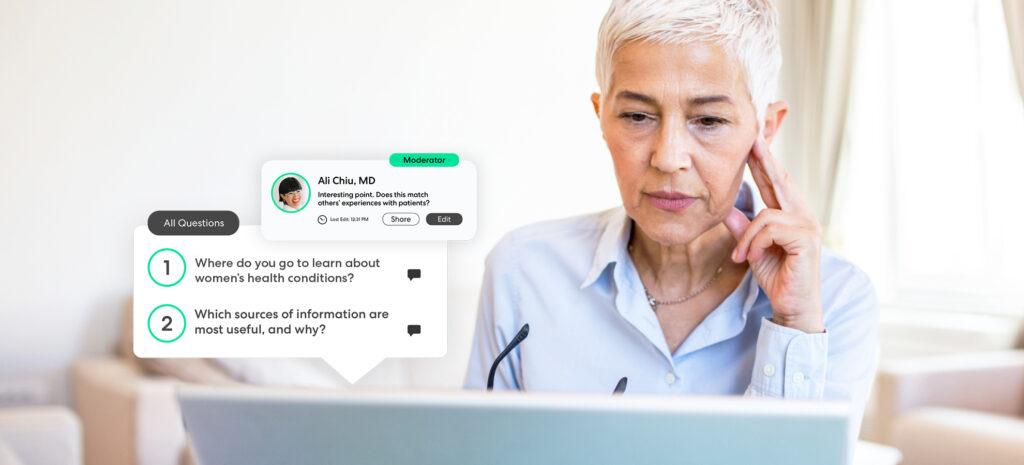Using asynchronous engagement to gain patient perspectives in pharma, amplify patient voices, and protect patient privacy
GOALS
A medical affairs team sought to gather patient perspectives on attitudes, beliefs, and behaviors surrounding a health condition that affects women. Objectives included:
- Gather women’s personal experiences of the condition
- Understand the varying perspectives of patients from diverse backgrounds and in various stages of the condition
- Obtain insight into each patient’s personal experiences, viewpoints, and opinions on technology
“We work hard to incorporate the patient’s voice into everything we do…so it’s extremely important to be able to hear directly from them what their experiences are.” – Patient centricity team lead
SOLUTION
The medical affairs team facilitated an anonymous patient advisory board on the Within3 insights management platform to obtain high-quality candid insight. A third-party agency recruited the patients, who used pseudonyms during the meeting and were not aware of the name of the client company.
The patients were divided into six groups based on ethnicity. Patients were unaware of these personal identifiers, which allowed the client team to learn more about the cultural norms surrounding specific women’s health conditions, assess the patients’ understanding of symptoms, and identify barriers to seeking care.
“The platform is very helpful. It allowed the patients to candidly discuss their experiences and disregard cultural or societal taboos around sharing highly personal experiences.” – US medical affairs team lead
The six sessions were held over 17 days. Patients were asked to log in to the platform daily, at any convenient time, and spend about an hour answering questions. New questions were released daily, and patients were encouraged to add as much detail as they wanted to provide. The session moderator asked follow-up questions when necessary.
Daily questions covered topics like experiences and impacts of the health condition, managing symptoms, and exploring patient-centered technology to seek support. Questions included Where do you go to learn about your health online and offline? and Which sources of information are most useful, and why?
RESULTS
The medical affairs team received a large volume of feedback during the patient advisory board. With an engaged moderator to ask follow-up questions and gather additional details, the sessions satisfied the team’s goals of using patient engagement strategies to address data gaps and get a more holistic view of how health conditions affect patients’ lives.
“We want to make sure we are filling data gaps…the lessons that we learned will really be the undercurrent for the education we put out.” – US medical affairs team lead



